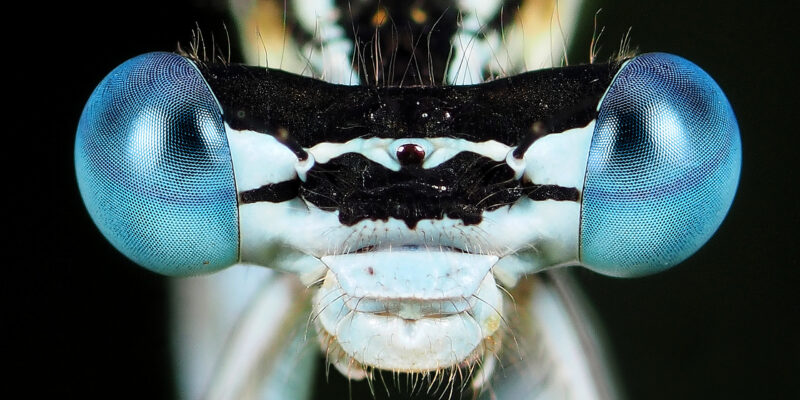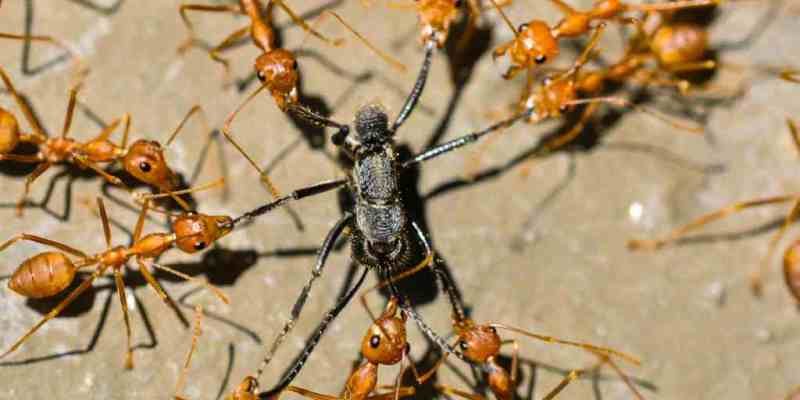Biodiversity Conservation Ecology Evolution
Impact of Pathogens’ Environment on Fireflies

A Bucknell University press release. Research published in Ecological Entomology.
One in three firefly species in North America may be at risk of extinction, according to a study by the Xerces Society for Invertebrate Conservation. One explanation may be the way fireflies react to common bacterial pathogens found in their environment. A team of Bucknell University researchers is now the first to study that interaction and has published a paper on their findings in Ecological Entomology, a journal of the Royal Entomological Society.
 Professor Sarah Lower, biology, participates in firefly collection. Photo by Carla Long
Professor Sarah Lower, biology, participates in firefly collection. Photo by Carla Long
Professors Sarah Lower and Moria Chambers, biology, and Professor Owais Gilani, mathematics, teamed up with a trio of biology students to assess how pathogens and environmental characteristics affected survival after infection among fireflies they had collected locally. They injected a group of fireflies with four common bacterial strains found in their native habitat and then compared their response to fireflies injected with a sterile saline solution.
The team found that infection with higher doses of the pathogen Providencia rettgeri — a bacterium commonly found in both water and land environments — had an increased risk of death for fireflies caught later in the season than those captured earlier, but seasonality did not significantly impact mortality with any of the other three pathogens they tested. The results highlight the importance of taking into account host, pathogen and environmental factors when investigating infection outcomes in wild-caught fireflies.
“We don’t know very much about how fireflies interact with microbes that are associated with them,” Lower says. “They have a long life cycle and spend up to two years as a larvae living in and on top of the soil, which has a ton of microbes. They’re carnivores, so they’re also encountering microbes through their own diet, and what their prey has eaten. And so hopefully, this study can help us learn more about firefly ecology.”
Lower noted the concern that firefly populations are declining and efforts to raise them in captivity have proven challenging for most species. This study should also aid those efforts.
“You can get them to lay eggs in the lab, you can get them to hatch out, but the larvae go downhill from there,” she says. “So trying to figure out more about how fireflies interact with their microbes could be helpful in these captive-rearing experiments.” Professor Moria Chambers, biology. Photo by Brett Simpson
Professor Moria Chambers, biology. Photo by Brett Simpson
The fireflies’ response to the different bacterial strains was also compared with that of fruit flies, which were also injected with the same pathogens to provide comparable data about an insect that is commonly raised in the lab.
“One of the really striking findings, from my perspective as someone who has studied fruit flies for 15 years, is that two of these bacteria are really potent in fruit flies and kill fruit flies at really low doses. However, when we inject fireflies with a much larger dose of the same two pathogens, it’s like they were injected with sterile saline,” Chambers says. “There is not an increase in mortality.”
“That suggests that there’s something about their immune system that is allowing them to survive these infections,” she adds. “They have something that the fruit flies don’t have. There’s something different about the environment in these fireflies.”
 Fireflies populate a country road. Photo by Radim Schreiber
Fireflies populate a country road. Photo by Radim Schreiber
The researchers conclude that doing more studies on fireflies might help them learn more about some of the different factors that can allow them to fight bacterial pathogens.
This study is part of a bigger project funded by The Pittsburgh Foundation that examines differences across life stages of fireflies.
“Many of us are now aware of age-specific differences in how COVID affects humans, so we might expect differences in how infections affect fireflies at different life stages,” Lower says. “So we can use fireflies as a system to study that.”
The researchers are planning to see if their findings extend to other local firefly species that live in the same habitats and how these infections influence energy stores within the firefly by using imaging to measure body condition over time.

Read the full article here, open access: Lower, S.E., Gilani, O., Tuffy, M.J., Patel, D.N., Zhu, Z. & Chambers, M.C. (2022) Host condition and pathogen identity influence bacterial infection survival in the common eastern firefly, Photinus pyralis. Ecological Entomology, 1– 12. Available from: https://doi.org/10.1111/een.13204






